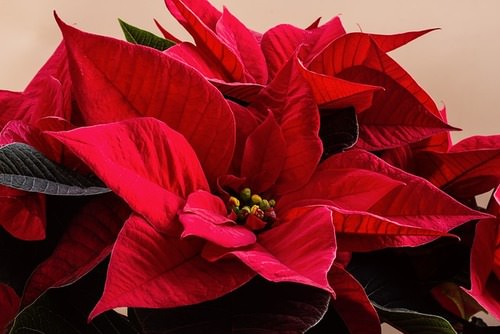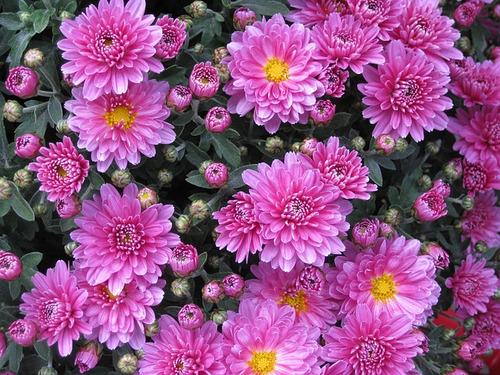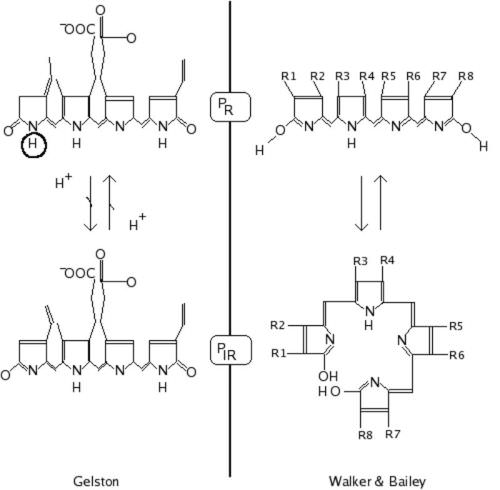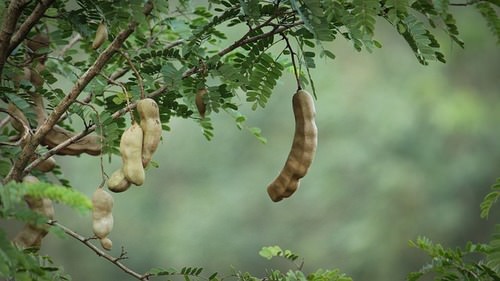13.66 日光时代主义和先进植物中的环环礁旋律
Section outline
-
Photoperiodism and Circadian Rhythms
::摄影时段主义和环环曲曲节奏You have probably noticed that many people use Poinsettias to brighten the short days surrounding the winter solstice. Chrysanthemums help us celebrate fall, and lilies, early spring ( Figure ). Each of these plants “knows” the season to bloom, by measuring photoperiod – the length of daylight within a 24-hour light-dark cycle. How do plants measure time and light?
::你可能已经注意到,许多人用Poinsettias来为冬季冬眠的短短的岁月亮亮亮亮。 Chrysanthemums帮助我们庆祝秋天和春初的百合(Figure ) 。 这些植物“知道”季节的开花季节,测量光期 — — 24小时光达循环中的日光长度。 植物如何测量时间和光亮?-
Edit here for caption
::编辑此标题 -
Edit here for caption
::编辑此标题
Even if you have no calendar, you can often tell the season by the types of plants which are flowering. Many plants measure photoperiod and use the information to time developmental processes. Poinsettias and chrysanthemums are short-day plants, with poinsettias requiring even longer nights (and shorter days). A group of pigments, or colored molecules, named phytochromes (“plant color”) are both sensors and effectors. The ability of phytochromes to measure photoperiod and change biological activity rests in their light-stimulated conversion between two states ( Figure ).
::一种色素或彩色分子,叫做植物色(“植物色”),既是感应器,又是影响器。 植物色素测量光期和改变生物活动的能力取决于两个州(图示)之间的光刺激转换。Phytochrome, the “clock” molecule which measures photoperiod in plants, has two configurations: PR and PIR. Sunlight converts the molecule to PIR, a form which enters the nucleus and controls gene expression. At night, PIR is gradually converted back to PR – the longer the night, the more PR produced. Using ratios of these molecules, plants measure photoperiod to detect predict seasonal changes, and hours of the day to govern diurnal changes in physiology and “behavior.” This diagram shows two hypotheses for the light-dependent changes in structure of a portion of the phytochrome molecule. A solution of P R – the phytochrome molecule in the state which absorbs red light - appears turquoise blue to our ( Figure ). During the day, P R absorbs red light from sunlight, and is converted to its active P IR state – which absorbs infrared (IR) rather than red light. P IR is transferred to the , where it regulates and the activity of many genes . P IR is therefore the “excited form” of phytochrome – because it has absorbed (red) light energy – and the “active form,” because it changes cell and plant physiology .
::PR的解决方案 — — 吸收红光的状态中的植物色分子 — — 似乎在我们(图层)看来是蓝色的绿宝石。 白天,PR吸收阳光的红光,并转换成活跃的PIR状态 — — 吸收红外线(IR)而不是红光。 PIR被转移到控制许多基因和许多基因活动的地方。 因此,PIR是植物色的“刺激形式 ” — —因为它吸收了(红)光能 — — 和“活性形式 ” , 因为它改变了细胞和植物生理学。Sunlight converts the plant “clock” molecule, phytochrome, to its active form, PIR. At night, PIR is gradually converted to an inactive form, PR. The two forms absorb different wavelengths of light – red for PR, and far red or infrared for PIR. This graph shows the amount and wavelength of absorbance of the two forms. At night, however, P IR gradually changes to P R . The longer the night, the more P R formed. This conversion provides the plant with a measure of the length of darkness, which also indicates the length of daylight. A solution of P IR would appear green, because the molecule in this form absorbs far-red (infra-red) light. P R is the inactive form, so many physiological processes in plants change based on day-night cycles, which are determined by the ratio of P IR to P R . Phytochrome activity controls size, shape and number of leaves, chlorophyll synthesis, seed germination , seasonal flowering or growth, leaf loss, and .
::然而,在晚上,PIR逐渐变换到PR。 夜晚越长, 形成的PR就越多。 这种变换为工厂提供了某种度量的黑暗长度, 也表明白天的长度。 PIR的解决方案看起来是绿色的, 因为这种形式的分子吸收了远红( 红外) 光。 PR是一种不活动的形式, 许多基于日间周期的植物的生理变化过程, 由PIR与PR的比率决定。 物理切片活动控制大小、 叶叶的形状和数量、 叶片合成、 种子发芽、 季节性开花或生长、 叶子流失 和 。Circadian rhythms, characteristic of nearly all groups of organisms , are internal cycles of “about a day” ( circa = around, dies = day) which key an organism’s physiology to the Earth’s day-night cycles. These rhythms were first observed in plants; descriptions of the daily opening and nightly closing of Tamarind tree leaves ( Figure ) date back to the 4th century BCE. In 1729, the French scientist de Marain placed a plant similar to Mimosa pumila – known to open its leaves in the morning and close them at night – in darkness, and showed that the opening and closing continued, independent of the presence of light. Now we know that the changes in phytochromes are at least in part responsible for this “clock”. Many plant processes can benefit from such changes; in the cases of Mimosa and the tamarind tree, open leaves collect sunlight but also lose more , and closed leaves can conserve water at night.
::环环体节律是几乎所有生物群的特征。 环环体节律是“约一天”的内部循环(约一天 ) ( 约一天 ) ( circa = 周围 , 死亡 = 白天 ) , 这对于地球的日间周期至关重要。 这些节律首先在植物中观察到;描述塔玛林德树叶(Figure)每天开关和夜间关闭的时间可以追溯到4世纪的BCE 。 1729年,法国科学家德马赖恩将一个类似于米莫萨·普米拉(Mimosa pumila ) 的植物放置在黑暗中 — — 已知该植物在早晨打开叶子并在夜间关闭叶子 — — 并且在黑暗中显示开放和关闭叶子会继续,不受光源的存在影响。 现在我们知道植物植物的改变至少部分是这一“ 24小时” 。 许多植物过程可以从这些变化中受益; 在米莫萨和塔明树的案例中,开叶收集阳光,但也损失更多,封闭叶可以在夜间保持水。Circadian rhythms were first observed as the daily opening and nightly closing of leaves of the tamarind tree in the 4th century BCE Photoperiodism uses daylength information gained by phytochrome to predict and prepare for seasonal changes such as flowering. Long-day plants (actually short-night plants, as you’ve learned) initiate flowering when the nights reach a certain minimum – in spring or early summer for the Northern Hemisphere; examples are Easter Lilies, carnations, spinach, and lettuce. Short-day plants require a certain number of hours of darkness to initiate flowering – in late summer or autumn in the Northern Hemisphere. Even a brief flash of light during the night can disrupt flowering. Those who try to raise Poinsettias in their homes often find this problem daunting; Poinsettias are extremely sensitive to photoperiod, requiring 2 months of uninterrupted long dark nights before flowering. Chrysanthemums are short-day plants that flower as the nights lengthen in fall.
::光谱周期利用植物植物获得的白昼信息来预测和准备季节性变化,如花朵。 长夜植物(事实上是短夜植物,如你所知 ) , 当夜晚达到一定的最低点时开始开花 — — 在春季或夏初,在北半球;例子包括复活节莉莉、康乃馨、菠萝和生菜。 短时植物需要一定的黑暗时间来开始开花 — — 在北半球的夏末或秋天。 即使夜间一闪一亮的光亮也会扰乱花朵。 试图在家中举起Pinsettias的人往往发现这个问题很棘手; 纸色植物对光期极为敏感,在开花之前需要两个月不间断的黑暗夜晚。 菊花是短时的植物,每晚都会花朵。Day-neutral plants flower in response to an environmental stimulus other than photoperiod – or simply when they reach an appropriate maturity. Some use temperature as a signal for flowering, but not in the way you might expect. Many fruit trees, for example, require a period of cold temperature before flowering – a way of ensuring that flowers are not wasted on an unusually warm autumn or an early winter thaw. This does not mean that they will flower immediately after the cold period is over, but that they can flower after sufficient spring growth and . Winter wheat, the model plant Arabidopsis , and many biennial plant (those with two-year life cycles) also require vernalization – cold treatment ensuring that flowers are “of the spring”.
::白昼中性植物花朵是对光期以外的环境刺激的响应 — — 或者仅仅在它们达到适当成熟期的时候。 有些人使用温度作为开花的信号,但不像你预期的那样。 比如,许多果树在开花前需要一段寒冷的时期 — — 以确保花朵不会浪费在异常温暖的秋天或冬季早期的融化中。 这并不意味着它们将在寒期过后立即开花,而是可以在足够长的春种和足够长的春种之后开花。 冬季小麦、模特植物阿比迪多斯(Arabidopsis)和许多两年期植物(有两年生命周期的植物 ) 也需要实证化 — — 冷化处理确保花朵是“春天的 ” 。Summary
::摘要-
Phytochromes measure day length by changing from an active form to an inactive form in the dark.
::Phytochromes测量白昼长度,在暗暗中从活动形式改为非活动形式。 -
Phytochrome activity controls seasonal and circadian rhythms by turning genes on and off.
::植物活动通过开关基因来控制季节性和环形节奏。 -
Circadian rhythms are 24-hour internal cycles which key an organism’s physiology to Earth’s 24-hour day.
::环环绕节奏是24小时的内部循环,是生物体生理学对地球24小时工作的关键。 -
Photoperiodism uses day-length information to predict and prepare for seasonal changes.
::照片周期利用日间信息预测和准备季节性变化。 -
Long-day plants flower in spring and early summer; short-day plants flower in fall and early winter.
::春夏初花朵长日;秋冬初花花花短日。 -
Day-neutral plants flower independently of photoperiod, but may require a period of cold, or vernalization.
::白天中性植物花朵,与光期无关,但可能需要一段寒冷时期或虚构时期。
-




